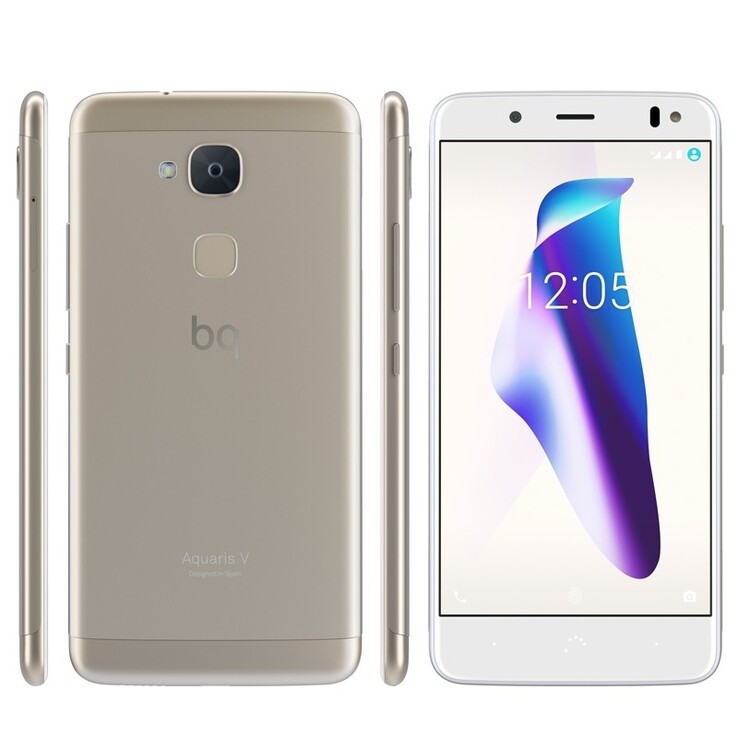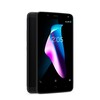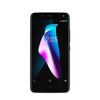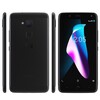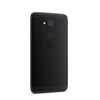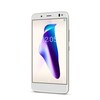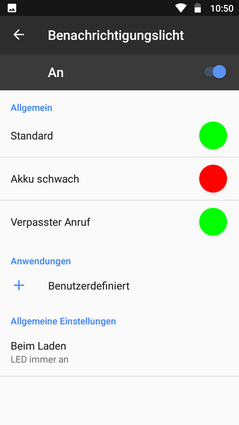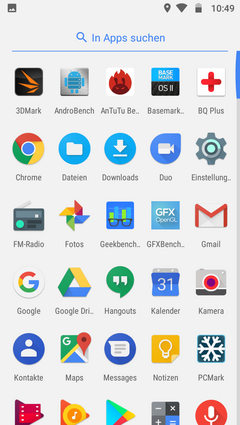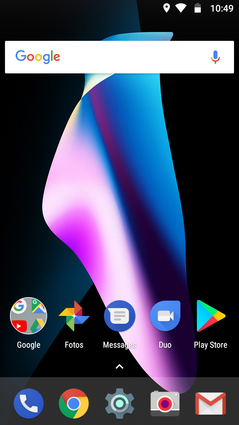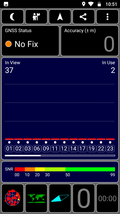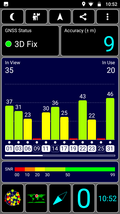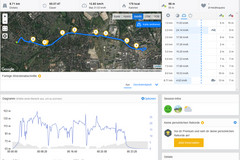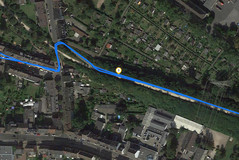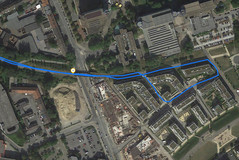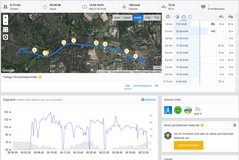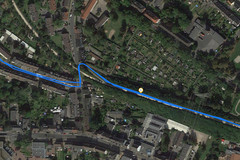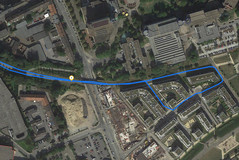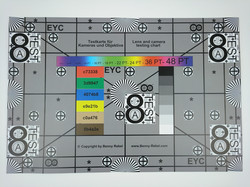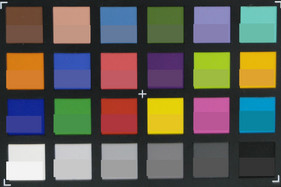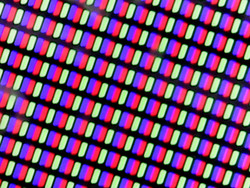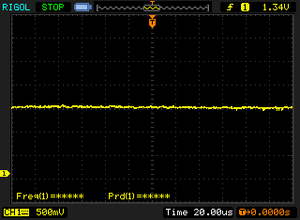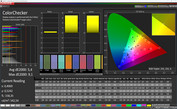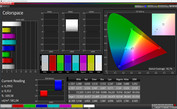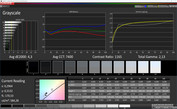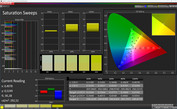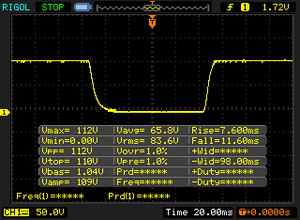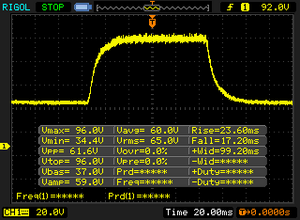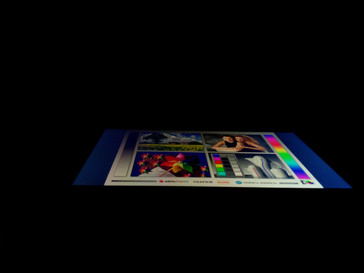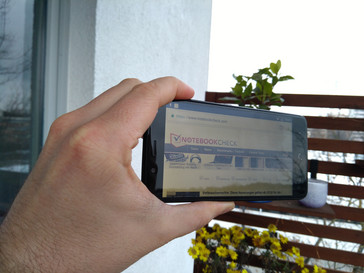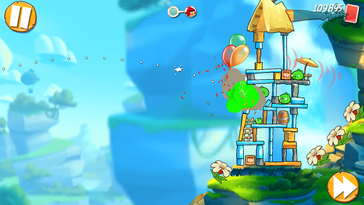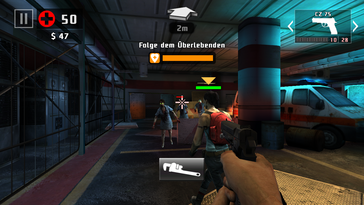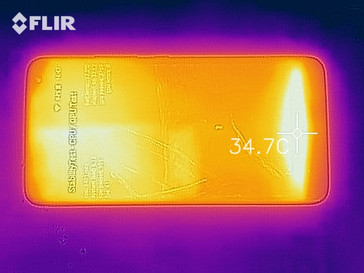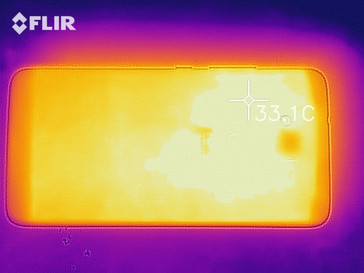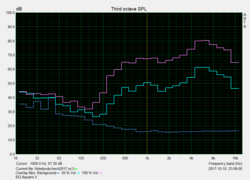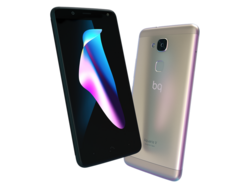BQ Aquaris V Smartphone Review
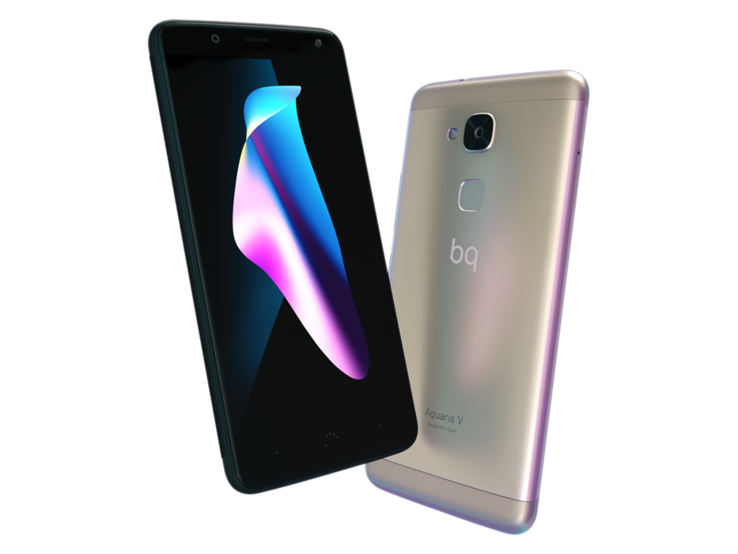
The Aquaris V is BQ's smartphone in the low priced mid-range for about 200 Euros (~$239). Even in this segment you will find decent cameras, good battery life and enough power for everyday use. To stand out from the crowd, the Aquaris V offers a camera with large pixels capturing more light, a metal case, QuickCharge and NFC. But is that enough to distinguish itself from other devices of this price range?
We want to find out and have provided some comparable devices for our test: Motorola Moto G5s, Nokia 5 and Samsung Galaxy J5 (2017) are the challengers that Aquaris V has to face. We also want to find out what the differences are compared to the more expensive BQ Aquaris X.
Case
The case of the BQ Aquaris V consists of metal and the front is covered with resistant Dinorex glass, which is curved at the sides over the edges of the display. The manufacturers call this effect 2.5D glass. The color options are black or gold with a white front. Our test device is the black version and you can clearly see the residues of fingerprints on the back. The smartphone is ergonomically comfortable to hold thanks to its rounded corners, but at 165 grams (~5.8 oz) it is not particularly light. The finishing is good and the stability hardly leaves much to be desired: although pressure on the front is visible as light waves in the liquid crystal.
While its battery cannot be replaced, SIM cards and microSD cards can be inserted and replaced via a drawer on the side of the housing. The case is protected according to IP52, which means that it can withstand dust and splash water.
Connectivity
Our test device offers 32 GB of storage and 3 GB of RAM for 249 Euros RRP (~$299). The smaller version with 16 GB of data storage and 2 GB of RAM costs 219 Euros (~$259). Another alternative is the Aquaris V Plus with a larger screen and up to 64 GB of storage starting at 269 Euros (~$319).
The BQ Aquaris V comes with NFC, a micro-USB port with USB-OTG and a dedicated 3.5 mm audio jack. The smartphone is equipped with two SIM cards, but if you want to expand the memory via microSD, you have to sacrifice a SIM slot. The SD card can be formatted into internal memory.
Software
BQ relies on an unaltered Android and version 7.1.2 was installed on our test device. At the time of testing the security patches were as of September 1 2017 and therefore no longer fresh. An update was not available. According to the manufacturer, there will be an update for Android 8 for Aquaris V.
The manufacturer has installed only a small app to check the protection provided by the BQ Plus warranty, otherwise only the usual Android apps are included. This keeps the system lean and allows users to easily install all additional apps that they need from the Google Play Store.
Communication and GPS
The Aquaris V supports fast WLAN to 802.11 ac and is thus much faster in wireless networks than, for example, the Nokia 5 or the Motorola Moto G5s. In practice and close to the router, pages are loaded with a slight delay, but the full signal strength is present. At a distance of ten meters (~33 ft) and through three walls, we still have half the signal strength. You should not use the smartphone too far from the router; otherwise the page layout will be delayed considerably.
LTE Cat. 4 means a maximum of 150 MBit/s in download and 50 MBit/s in upload, which the Aquaris V accomplishes. Eight LTE bands are available for this purpose. In addition, four bands each can be used in GSM and UMTS. In the German Vodafone network, reception in buildings in the urban environment was decent, but in some cases it dropped to half the signal strength. LTE was always available.
| Networking | |
| iperf3 transmit AX12 | |
| Samsung Galaxy J5 (2017) Duos | |
| BQ Aquaris X | |
| BQ Aquaris V | |
| Nokia 5 | |
| Motorola Moto G5s | |
| iperf3 receive AX12 | |
| BQ Aquaris X | |
| BQ Aquaris V | |
| Samsung Galaxy J5 (2017) Duos | |
| Nokia 5 | |
| Motorola Moto G5s | |
Even near windows the GPS module cannot locate us indoors. Outdoors it takes a few seconds, before a rather moderate accuracy of 9 meters (~29 ft) is achieved.
We take the BQ Aquaris V on a bike ride and also carry the Garmin Edge 500, a professional navigation system for cyclists. By comparing the data recorded with Runtastic, we can provide even more information about the practicability of the GPS unit in Aquaris V. The measured distance differs by only 20 meters (~66 ft), which is a very good start. The smartphone traces our path with surprising precision and follows it in a curve even more accurately than the Navi, as you can see from the way the Garmin Edge 500 passes through a house while the Aquaris V places us on the road. Overall, the Aquaris V is well suited for all those who want to use their smartphone as a navigation system.
Phone Features and Voice Quality
The standard Google application is used as the phone app. It is easy to operate and puts the contacts in the foreground. The telephone keypad can be accessed via an always visible button.
The voice quality is good on our side and the person opposite is transmitted quite clearly. Earphones buzz slightly at maximum volume, but if you turn down two steps you get a very clear sound. On the other hand, we do not like the microphone as much. It is quite sensitive and picks up soft voices well, but it transmits our voice rather muffled and distorts quite quickly when voices are loud. In speakerphone mode, the person you are talking to is played back quite clearly through the speaker. The microphone behaves in a similar way to the telephone mode. It picks up soft sounds well, but distorts loud sounds.
Cameras
The camera has 12 megapixels of resolution at the back of the camera, which is not a record, but it is supposed to take good photos even in low-light situations due to large pixels. The camera is supported by a monochrome flash and operates with a phase comparison autofocus. At first glance, the images look quite good in bright light, but they cannot compete with high-quality cameras such as Galaxy Note 8 when it comes to details. In low light, the image of the main camera of the Aquaris V looks quite dark, and a strong noise is visible. Again, the picture quality is not comparable to that of a Galaxy Note 8 and the OnePlus 5 also brightens up much better, but the picture of the Aquaris V is not too blurry.
Videos can be recorded in 1080p and at 30 FPS. In low light conditions, the image is noisy quickly, but in good light the image reproduction is good and the sharpness is pleasing. The automatic focus and exposure controls work fast and quite reliably.
The front camera has quite a generous 8 megapixel resolution and slightly smaller pixels than the rear lens. The pictures of the frontcam look a little dark, but are rich in detail and quite sharp in the area of the fixed focus.
In addition to its practical use, the main camera must also prove its worth in the laboratory, where we photograph a number of test images under controlled light conditions. In the test picture we are convinced by the high sharpness and the somewhat blurred, but otherwise clean representation of text on a colored background. Color areas also look less pixelated than many other Smartphone cameras in this price range. The sharpness decreases slightly towards the edges of the image.
Color reproduction is relatively lifelike and at worst a little bit too dark.
Accessories and Warranty
Apart from a QuickCharge 3.0 power supply and a USB cable, there is only one SIM tool as an included accessory. On BQ's website, the accessories are clearly arranged and surprisingly inexpensive: For example, you can get an additional power supply with one or even two USB ports for just under 15 Euros (~$18). Two different cases for the Aquaris V cost either around 17 or just under 25 Euros (~$ 20 and ~$30 respectively). A screen protector or car charger is also available.
According to the manufacturer, the warranty period is 24 months. Please see our Guarantees, Return Policies and Warranties FAQ for country-specific information.
Input Devices and Operation
Google's GBoard is used as a keyboard and other keyboard apps can easily be added. Google's keyboard allows fast typing and has all the standard features such as gliding or predictive input.
Its touch screen operates without problems and is very sensitive at the edges too. The menu keys for Android are implemented as touch buttons below the screen, but software buttons can also be displayed on the screen if desired. The fingerprint sensor on the back of the phone unlocks it quickly and reliably from standby, but cannot be used for navigation. The manufacturer has added a few more control elements, so the camera can be activated by double-clicking on the standby button. If desired, the display can be activated by picking up. There is even an inactivity display, which can be activated automatically upon incoming messages.
Display
A display resolution of 1280x720 pixels is still quite common in this price range. However, the Motorola Moto G5s and the Aquaris X show that even in the low-cost mid-range segment, the trend is moving towards Full HD, since top-of-the-range devices are attempting to achieve even higher resolutions. If you take a closer look, you can see the difference in resolution: The Aquaris V's image looks slightly more blurred than on a full HD display of the same size, and with slanted lines you can sometimes notice pixel stairs when looking closely. All in all, the screen of the Aquaris V is good and the picture appears clear.
The brightness of the display is quite high with an average of 583 cd/m². The Moto G5s, for example, cannot keep up with this. The comparable range also contains the Nokia 5 with an even brighter screen. The brightness distribution is fairly consistent at 91%, so that larger color surfaces do not seem unevenly illuminated.
| |||||||||||||||||||||||||
Brightness Distribution: 91 %
Center on Battery: 578 cd/m²
Contrast: 1180:1 (Black: 0.49 cd/m²)
ΔE ColorChecker Calman: 5.4 | ∀{0.5-29.43 Ø4.77}
ΔE Greyscale Calman: 4.3 | ∀{0.09-98 Ø5}
Gamma: 2.13
CCT: 7400 K
| BQ Aquaris V IPS, 1280x720, 5.2" | Motorola Moto G5s IPS, 1920x1080, 5.2" | Samsung Galaxy J5 (2017) Duos Super AMOLED, 1280x720, 5.2" | Nokia 5 IPS, 1280x720, 5.2" | BQ Aquaris X LTPS IPS , 1920x1080, 5.2" | |
|---|---|---|---|---|---|
| Screen | -3% | 10% | -7% | -2% | |
| Brightness middle (cd/m²) | 578 | 490 -15% | 448 -22% | 630 9% | 675 17% |
| Brightness (cd/m²) | 583 | 502 -14% | 451 -23% | 635 9% | 702 20% |
| Brightness Distribution (%) | 91 | 92 1% | 91 0% | 90 -1% | 91 0% |
| Black Level * (cd/m²) | 0.49 | 0.43 12% | 0.57 -16% | 0.59 -20% | |
| Contrast (:1) | 1180 | 1140 -3% | 1105 -6% | 1144 -3% | |
| Colorchecker dE 2000 * | 5.4 | 5.7 -6% | 2.7 50% | 5 7% | 4.5 17% |
| Colorchecker dE 2000 max. * | 9.1 | 7.8 14% | 9.8 -8% | 8.7 4% | 9.1 -0% |
| Greyscale dE 2000 * | 4.3 | 4.7 -9% | 1.6 63% | 6.9 -60% | 6.4 -49% |
| Gamma | 2.13 103% | 2.4 92% | 2.06 107% | 2.37 93% | 2.24 98% |
| CCT | 7400 88% | 7526 86% | 6557 99% | 8736 74% | 7478 87% |
* ... smaller is better
Screen Flickering / PWM (Pulse-Width Modulation)
| Screen flickering / PWM not detected | |||
In comparison: 53 % of all tested devices do not use PWM to dim the display. If PWM was detected, an average of 8084 (minimum: 5 - maximum: 343500) Hz was measured. | |||
The black value of 0.49 cd/m² is rather average in the midfield, although the devices are quite close to each other anyway. Of course, the Galaxy J5 with its OLED display is the best choice because it can deactivate individual pixels completely. The contrast ratio of 1180:1 is slightly better than the comparable devices, excluding the Galaxy J5.
A very slight blue cast is seen in our tests with the spectrophotometer and the CalMAN software. Overall, the displayed colors deviate only slightly from the reference color space sRGB. The display can be made less stressful for the eyes at night with the activatable blue light filter. Fortunately, we were unable to detect PWM when lowering the brightness.
Display Response Times
| ↔ Response Time Black to White | ||
|---|---|---|
| 19.2 ms ... rise ↗ and fall ↘ combined | ↗ 7.6 ms rise | |
| ↘ 11.6 ms fall | ||
| The screen shows good response rates in our tests, but may be too slow for competitive gamers. In comparison, all tested devices range from 0.1 (minimum) to 240 (maximum) ms. » 41 % of all devices are better. This means that the measured response time is similar to the average of all tested devices (20.2 ms). | ||
| ↔ Response Time 50% Grey to 80% Grey | ||
| 40.8 ms ... rise ↗ and fall ↘ combined | ↗ 23.6 ms rise | |
| ↘ 17.2 ms fall | ||
| The screen shows slow response rates in our tests and will be unsatisfactory for gamers. In comparison, all tested devices range from 0.165 (minimum) to 636 (maximum) ms. » 63 % of all devices are better. This means that the measured response time is worse than the average of all tested devices (31.6 ms). | ||
Outdoors on cloudy days the BQ Aquaris V can be used better than in the blazing sun. The sufficiently bright screen competes with the strong reflections on the screen, which are present on almost all current smartphones.
When viewed from the side, a strong darkening of the screen is noticeable in a corner, but otherwise the picture is clearly visible.
Performance
Interestingly, the BQ Aquaris V with its Qualcomm Snapdragon 435 is slightly behind in many benchmarks compared to devices with the predecessor version Snapdragon 430. The differences in performance compared to the similarly priced devices are only a few percentage points, but it is a little disappointing that the more modern SoC brings a little less power to almost all benchmarks. In terms of performance, the BQ Aquaris X is in a different league anyway.
Menu wise, it is always easy to use. Even in apps we hardly find any hiccups. Only in more demanding tasks such as video editing or apps with elaborate maps do we feel that the BQ Aquaris V is a low-middle class device. It does not offer the performance of the Aquaris X, for example.
| AnTuTu v6 - Total Score (sort by value) | |
| BQ Aquaris V | |
| Motorola Moto G5s | |
| Samsung Galaxy J5 (2017) Duos | |
| Nokia 5 | |
| BQ Aquaris X | |
| PCMark for Android | |
| Work performance score (sort by value) | |
| BQ Aquaris V | |
| Motorola Moto G5s | |
| Samsung Galaxy J5 (2017) Duos | |
| Nokia 5 | |
| BQ Aquaris X | |
| Work 2.0 performance score (sort by value) | |
| BQ Aquaris V | |
| Motorola Moto G5s | |
| Samsung Galaxy J5 (2017) Duos | |
| Nokia 5 | |
| BQ Aquaris X | |
| Geekbench 4.4 | |
| 64 Bit Single-Core Score (sort by value) | |
| BQ Aquaris V | |
| Motorola Moto G5s | |
| Samsung Galaxy J5 (2017) Duos | |
| Nokia 5 | |
| BQ Aquaris X | |
| 64 Bit Multi-Core Score (sort by value) | |
| BQ Aquaris V | |
| Motorola Moto G5s | |
| Samsung Galaxy J5 (2017) Duos | |
| Nokia 5 | |
| BQ Aquaris X | |
| Compute RenderScript Score (sort by value) | |
| BQ Aquaris V | |
| Motorola Moto G5s | |
| Samsung Galaxy J5 (2017) Duos | |
| GFXBench (DX / GLBenchmark) 2.7 | |
| T-Rex Onscreen (sort by value) | |
| BQ Aquaris V | |
| Motorola Moto G5s | |
| Samsung Galaxy J5 (2017) Duos | |
| Nokia 5 | |
| BQ Aquaris X | |
| 1920x1080 T-Rex Offscreen (sort by value) | |
| BQ Aquaris V | |
| Motorola Moto G5s | |
| Samsung Galaxy J5 (2017) Duos | |
| Nokia 5 | |
| BQ Aquaris X | |
| GFXBench 3.0 | |
| on screen Manhattan Onscreen OGL (sort by value) | |
| BQ Aquaris V | |
| Motorola Moto G5s | |
| Samsung Galaxy J5 (2017) Duos | |
| Nokia 5 | |
| BQ Aquaris X | |
| 1920x1080 1080p Manhattan Offscreen (sort by value) | |
| BQ Aquaris V | |
| Motorola Moto G5s | |
| Samsung Galaxy J5 (2017) Duos | |
| Nokia 5 | |
| BQ Aquaris X | |
| GFXBench 3.1 | |
| on screen Manhattan ES 3.1 Onscreen (sort by value) | |
| BQ Aquaris V | |
| Motorola Moto G5s | |
| Samsung Galaxy J5 (2017) Duos | |
| Nokia 5 | |
| BQ Aquaris X | |
| 1920x1080 Manhattan ES 3.1 Offscreen (sort by value) | |
| BQ Aquaris V | |
| Motorola Moto G5s | |
| Samsung Galaxy J5 (2017) Duos | |
| Nokia 5 | |
| BQ Aquaris X | |
| GFXBench | |
| on screen Car Chase Onscreen (sort by value) | |
| BQ Aquaris V | |
| Motorola Moto G5s | |
| Samsung Galaxy J5 (2017) Duos | |
| Nokia 5 | |
| BQ Aquaris X | |
| 1920x1080 Car Chase Offscreen (sort by value) | |
| BQ Aquaris V | |
| Motorola Moto G5s | |
| Samsung Galaxy J5 (2017) Duos | |
| Nokia 5 | |
| BQ Aquaris X | |
The browser performance leaves a bit to be desired: In light of the already low category standard, the Aquaris V ranks quite far behind the competition. Google's HTML5 learning game Interland lags a bit from time to time, but is playable.
| JetStream 1.1 - Total Score | |
| BQ Aquaris X (Chrome Version 60) | |
| Samsung Galaxy J5 (2017) Duos (Samsung Browser 5.4) | |
| Nokia 5 (Chrome 56.0.2924.87) | |
| Motorola Moto G5s (Chrome 62) | |
| BQ Aquaris V (Chrome 63) | |
| Octane V2 - Total Score | |
| Samsung Galaxy J5 (2017) Duos (Samsung Browser 5.4) | |
| BQ Aquaris X (Chrome Version 60) | |
| BQ Aquaris V (Chrome 63) | |
| Nokia 5 (Chrome 56.0.2924.87) | |
| Motorola Moto G5s (Chrome 62) | |
| Mozilla Kraken 1.1 - Total | |
| Motorola Moto G5s (Chrome 62) | |
| BQ Aquaris V (Chrome 63) | |
| Nokia 5 (Chrome 56.0.2924.87) | |
| BQ Aquaris X (Chrome Version 60) | |
| Samsung Galaxy J5 (2017) Duos (Samsung Browser 5.4) | |
* ... smaller is better
Storage speed is pretty much on par with its competition while the Galaxy J5 drops behind considerably. Even the more expensive Aquaris X cannot stand out here. However, the loading times in complex apps are somewhat longer, and high-end devices offer much faster access times.
Access to our reference microSD Toshiba Exceria Pro M501 is similarly fast with Aquaris V as with most of the comparable devices.
| BQ Aquaris V | Motorola Moto G5s | Samsung Galaxy J5 (2017) Duos | Nokia 5 | BQ Aquaris X | |
|---|---|---|---|---|---|
| AndroBench 3-5 | 58% | -22% | -1% | 4% | |
| Sequential Read 256KB (MB/s) | 266.3 | 259 -3% | 204.4 -23% | 255.6 -4% | 266.4 0% |
| Sequential Write 256KB (MB/s) | 76.7 | 77.5 1% | 52 -32% | 74.9 -2% | 75.3 -2% |
| Random Read 4KB (MB/s) | 33.7 | 40.6 20% | 24.07 -29% | 40.54 20% | 37.47 11% |
| Random Write 4KB (MB/s) | 10.9 | 46.2 324% | 9.9 -9% | 8.39 -23% | 11.85 9% |
| Sequential Read 256KB SDCard (MB/s) | 83.6 ? | 84.1 ? 1% | 72.2 ? -14% | 83.9 0% | 84.3 ? 1% |
| Sequential Write 256KB SDCard (MB/s) | 60.8 ? | 62.3 ? 2% | 44.21 ? -27% | 62 2% | 62.6 ? 3% |
Games
When it comes to gaming, Aquaris V is great for simpler mobile games such as “Angry Birds 2”, but even more demanding 3D games like “Dead Trigger 2” run smoothly. However, you should not expect a full 60 FPS display.
Touch screen and position sensor control functions are absolutely reliable.
Emissions
Temperature
There is no need to be afraid of excessive heating of the case: The total maximum temperature measured in the test is 34.5 °C (~94 °F), which is not even lukewarm. The difference to idle operation at just under 4 °C (~7 °F) is also quite small.
(+) The maximum temperature on the upper side is 34.5 °C / 94 F, compared to the average of 35.2 °C / 95 F, ranging from 21.9 to 247 °C for the class Smartphone.
(+) The bottom heats up to a maximum of 32.8 °C / 91 F, compared to the average of 34 °C / 93 F
(+) In idle usage, the average temperature for the upper side is 28.2 °C / 83 F, compared to the device average of 32.9 °C / 91 F.
Speaker
The speaker of the BQ Aquaris V sits at the lower edge of the phone and does not sound too bad for a low priced middle class smartphone. Obviously, you should not expect real bass and the measured data of the Aquaris X show that the speaker has a more balanced sound. But the treble does not sound unpleasant with the Aquaris V and the overall audio is quite warm. Even at maximum volume the speaker does not distort so you can watch videos with your smartphone or listen to a piece of music.
The output to Bluetooth devices supports aptX, which improves sound quality. Both the wireless output and the 3.5 mm jack plug provide clean sound to the speakers.
BQ Aquaris V audio analysis
(+) | speakers can play relatively loud (86.1 dB)
Bass 100 - 315 Hz
(-) | nearly no bass - on average 26.7% lower than median
(±) | linearity of bass is average (9.9% delta to prev. frequency)
Mids 400 - 2000 Hz
(+) | balanced mids - only 1.9% away from median
(+) | mids are linear (4.8% delta to prev. frequency)
Highs 2 - 16 kHz
(±) | higher highs - on average 8.6% higher than median
(+) | highs are linear (5.5% delta to prev. frequency)
Overall 100 - 16.000 Hz
(±) | linearity of overall sound is average (21.7% difference to median)
Compared to same class
» 43% of all tested devices in this class were better, 8% similar, 49% worse
» The best had a delta of 11%, average was 35%, worst was 134%
Compared to all devices tested
» 61% of all tested devices were better, 7% similar, 32% worse
» The best had a delta of 4%, average was 24%, worst was 134%
BQ Aquaris X audio analysis
(+) | speakers can play relatively loud (85.7 dB)
Bass 100 - 315 Hz
(-) | nearly no bass - on average 30.8% lower than median
(±) | linearity of bass is average (10.3% delta to prev. frequency)
Mids 400 - 2000 Hz
(±) | reduced mids - on average 5.7% lower than median
(+) | mids are linear (5.8% delta to prev. frequency)
Highs 2 - 16 kHz
(±) | higher highs - on average 9.5% higher than median
(+) | highs are linear (4.3% delta to prev. frequency)
Overall 100 - 16.000 Hz
(±) | linearity of overall sound is average (27.1% difference to median)
Compared to same class
» 70% of all tested devices in this class were better, 5% similar, 25% worse
» The best had a delta of 11%, average was 35%, worst was 134%
Compared to all devices tested
» 82% of all tested devices were better, 4% similar, 14% worse
» The best had a delta of 4%, average was 24%, worst was 134%
Frequency diagram in comparison (checkboxes can be selected/de-selected!)
Power Management
Power Consumption
When it comes to energy consumption, the BQ Aquaris V is a mixed bag: In idle mode, consumption is quite high at all times, while it only increases moderately in load mode. At 5.13 watts, the maximum load consumption is the second highest in the comparable field. It is pleasing to note that there is no energy consumption at all in the switched off mode and little energy is consumed in the standby mode.
Outstandingly low consumption values of the Samsung Galaxy J5 are unmatched by any comparable device.
| Off / Standby | |
| Idle | |
| Load |
|
Key:
min: | |
| BQ Aquaris V 3100 mAh | Motorola Moto G5s 3000 mAh | Samsung Galaxy J5 (2017) Duos 3000 mAh | Nokia 5 3000 mAh | BQ Aquaris X 3100 mAh | |
|---|---|---|---|---|---|
| Power Consumption | -7% | 37% | 5% | -18% | |
| Idle Minimum * (Watt) | 0.71 | 0.67 6% | 0.52 27% | 0.52 27% | 1.12 -58% |
| Idle Average * (Watt) | 1.82 | 1.4 23% | 1.17 36% | 1.78 2% | 2.16 -19% |
| Idle Maximum * (Watt) | 1.84 | 1.52 17% | 1.24 33% | 1.96 -7% | 2.18 -18% |
| Load Average * (Watt) | 3.12 | 4.56 -46% | 1.66 47% | 3.23 -4% | 2.94 6% |
| Load Maximum * (Watt) | 5.13 | 7.05 -37% | 2.94 43% | 4.88 5% | 5.1 1% |
* ... smaller is better
Battery Life
At 3100 mAh or just under 11.8 watt-hours, the battery is slightly larger than those in many comparable devices. It is enough to ensure that the BQ Aquaris V has good, albeit not outstanding, running times. You can surf on WLAN continuously for 11:27 hours until the battery runs out. This allows you to easily endure one working day, perhaps even two if you use your smartphone efficiently. Due to its low energy consumption, the Samsung Galaxy J5 gets 50 minutes more WLAN runtime out of its slightly smaller battery.
QuickCharge 3.0 allows the smartphone to be quickly reloaded: It takes about 1:30 hours from 0 to 100%.
| BQ Aquaris V 3100 mAh | Motorola Moto G5s 3000 mAh | Samsung Galaxy J5 (2017) Duos 3000 mAh | Nokia 5 3000 mAh | BQ Aquaris X 3100 mAh | |
|---|---|---|---|---|---|
| Battery runtime | -25% | 29% | 6% | -14% | |
| WiFi v1.3 (h) | 11.5 | 8.6 -25% | 12.3 7% | 11.9 3% | 9.9 -14% |
| Load (h) | 5 | 3.8 -24% | 7.5 50% | 5.4 8% | |
| Reader / Idle (h) | 20.6 | 26.1 | 29.5 | ||
| H.264 (h) | 10.8 | 15.3 | 13.2 |
Pros
Cons
Verdict
The BQ Aquaris V is indeed a rather positive surprise: The camera's image quality is slightly above the average of its competition, the battery lasts quite long, the WLAN is fast and the GPS module locates fairly accurately.
The only negative aspects that can be considered are the ordinary design and the distorting microphone. The performance is just below average. We expected a bit more from the Snapdragon 435. In practice, however, you will not notice the difference to other models within the same price range. Those surfing the internet a lot might be better off with a different smartphone, because the Aquaris V provides a rather slow page loading time in the browser.
The BQ Aquaris V convinces with pure Android, decent running times and, within its possibilities, good cameras too.
The device hardly heats up, the speaker is solid, the screen sufficiently bright and rich in contrast and the energy consumption is decent. The Aquaris V may not be setting new standards in the low-priced mid-range, but it is a very solid and reliable device not only for pure Android enthusiasts.
BQ Aquaris V
- 12/19/2017 v6 (old)
Florian Wimmer




